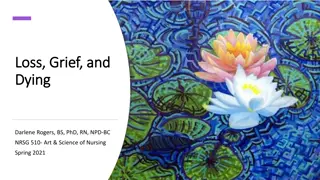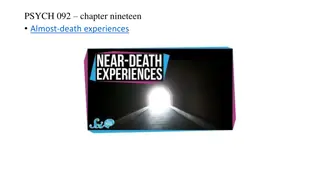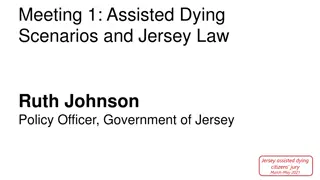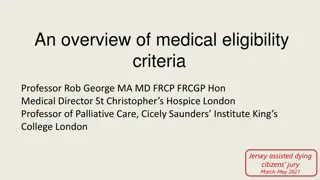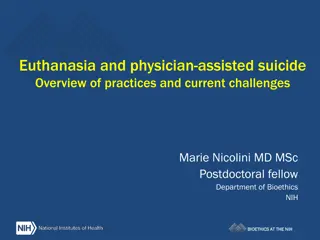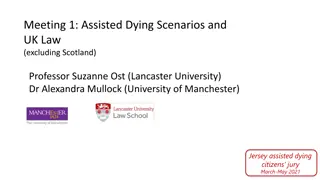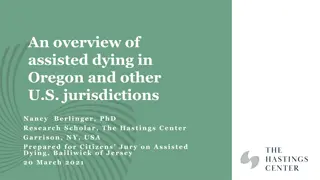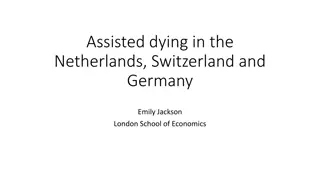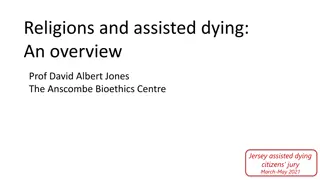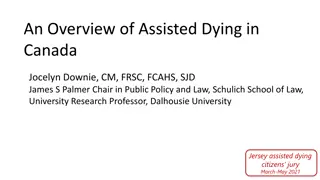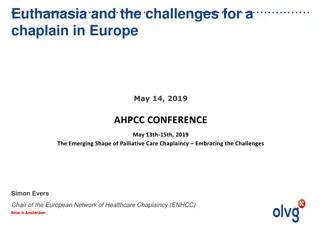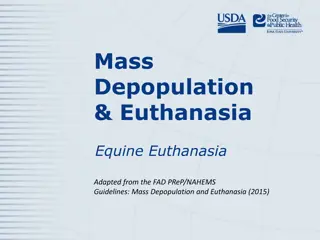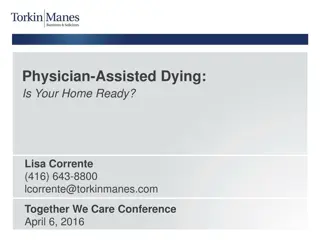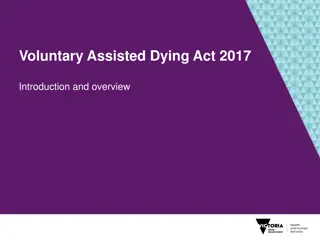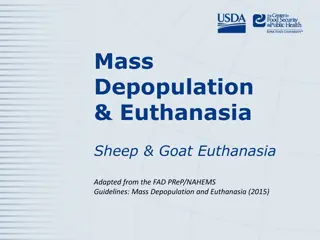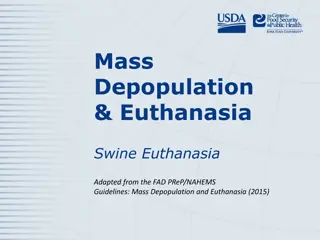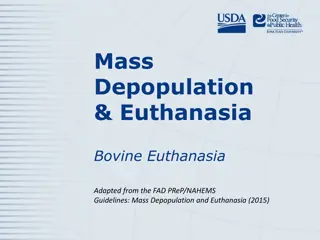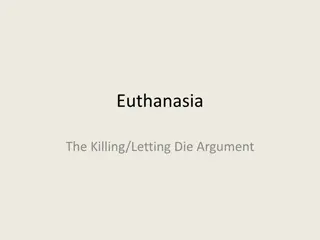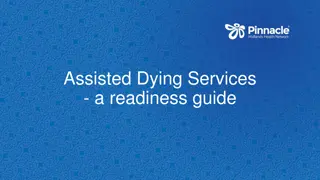The Dangers of State-Assisted Dying and Euthanasia
State-assisted dying poses significant risks, including pressure on vulnerable individuals, elder abuse, and normalization of suicide. Concerns also include the slippery slope towards including more conditions or groups, opposition from palliative care clinicians, and the increase in state-assisted deaths. Examples from Oregon and the Netherlands highlight these dangers, emphasizing the need to critically assess the implications of such practices.
Download Presentation

Please find below an Image/Link to download the presentation.
The content on the website is provided AS IS for your information and personal use only. It may not be sold, licensed, or shared on other websites without obtaining consent from the author.If you encounter any issues during the download, it is possible that the publisher has removed the file from their server.
You are allowed to download the files provided on this website for personal or commercial use, subject to the condition that they are used lawfully. All files are the property of their respective owners.
The content on the website is provided AS IS for your information and personal use only. It may not be sold, licensed, or shared on other websites without obtaining consent from the author.
E N D
Presentation Transcript
State Assisted Dying: A Dangerous Path to go Down Dr Gordon Macdonald Chief Executive, Care Not Killing
Key Points: The Dangers of Euthanasia and Assisted Suicide A Duty to Die - pressure on vulnerable people, elder abuse, increasing numbers, euthanasia without explicit consent etc. Slippery slope extension to include other conditions or groups (e.g. psychiatric conditions, children). Opposition from palliative care clinicians - changes to the medical culture and the doctor/patient relationship The normalisation of suicide where death is seen as a solution to any form of unbearable suffering
Oregon: Fear of Being a Burden (Source: Oregon Health Authority, DWD Act annual reports) 1998 2001 2004 2007 2011 2015 2017 2019 13% cited this as a reason for assisted suicide 24% 38% 44.9% 42.3% 48.1% 55.2% 59%
Increases in State Assisted Deaths (Source: Borasio, Jax & Gamondi, The Lancet, 20/2/19)
Source: The Guardian, 15/07/19
The Netherlands 4 % of all deaths are formally classified as euthanasia. More than 25% of deaths are induced either as a result of euthanasia, assisted suicide or continuous deep sedation. Bar chart source: Murphy S. statistics compiled from the Regional Euthanasia Review Committees' Annual Reports. Protection of Conscience Project, August, 2017.
The slippery slope is inevitable Autonomy and compassion arguments can be applied widely Logical mission creep using equality law extended from - Terminally ill to chronically ill - Adults to children - Mentally competent to mentally incompetent - Those with serious illnesses to elderly people who have multiple minor conditions or are just tired of life . Proposed safeguards don t work and aren t safe
Belgium Raus et.al. (Source: The Journal of Medicine & Philosophy, 46,pp. 80-107, 2021) Findings: Physicians can diagnose "polypathology" an assortment of minor medical problems as sufficient criteria for euthanasia of the elderly. The treating physician can override consultants' objections to euthanasia. The oversight Commission that monitors euthanasia has conflicts of interest and is fraught with ethical contradictions.
Euthanasia solely for Psychiatric Conditions in the Netherlands 2017 83 2016 60 2015 56 2014 - 41 2013 - 42 2012 - 14 2011 - 13 2010 - 2 A 600% increase 2012-17
The World Medical Association Oct 2019 The WMA reiterates its strong commitment to the principles of medical ethics and that utmost respect has to be maintained for human life. Therefore, the WMA is firmly opposed to euthanasia and physician-assisted suicide. No physician should be forced to participate in euthanasia or assisted suicide, nor should any physician be obliged to make referral decisions to this end.
BMA Poll Results 76% of palliative care respondents were personally opposed to Physician Assisted Suicide (PAS). 83% of palliative care respondents were personally opposed to euthanasia. 76% were unwilling to participate in PAS 84% were unwilling to administer euthanasia
Continuous Deep Sedation until Death in the Netherlands 2001 5.6% of all deaths 2005 8.2% 2010 12.5% 2013 16% 2016 20% 2017 22.6%
The Normalisation of Suicide Prof. Theo Boer The assumption that euthanasia will lead to lower suicide rates is not supported by the numbers. 150% increase in the euthanasia rate in 10 years in the Netherlands and a 40% increase in the suicide rate from 2007 to 2016. (Journal of Ethics in Mental Health,10, Dec 2017) In Oregon, the suicide rate increased by 35% between 2001 and 2018. In 2019, the suicide rate among the general population was 35% higher than the US national average.
The key arguments against euthanasia A change in the law would place vulnerable people under pressure to request early death therefore it should not be changed for a few persistent cases Requests for euthanasia are extremely rare when patients needs fully met therefore we need good palliative care The current law is clear and right and works it tempers justice with mercy


